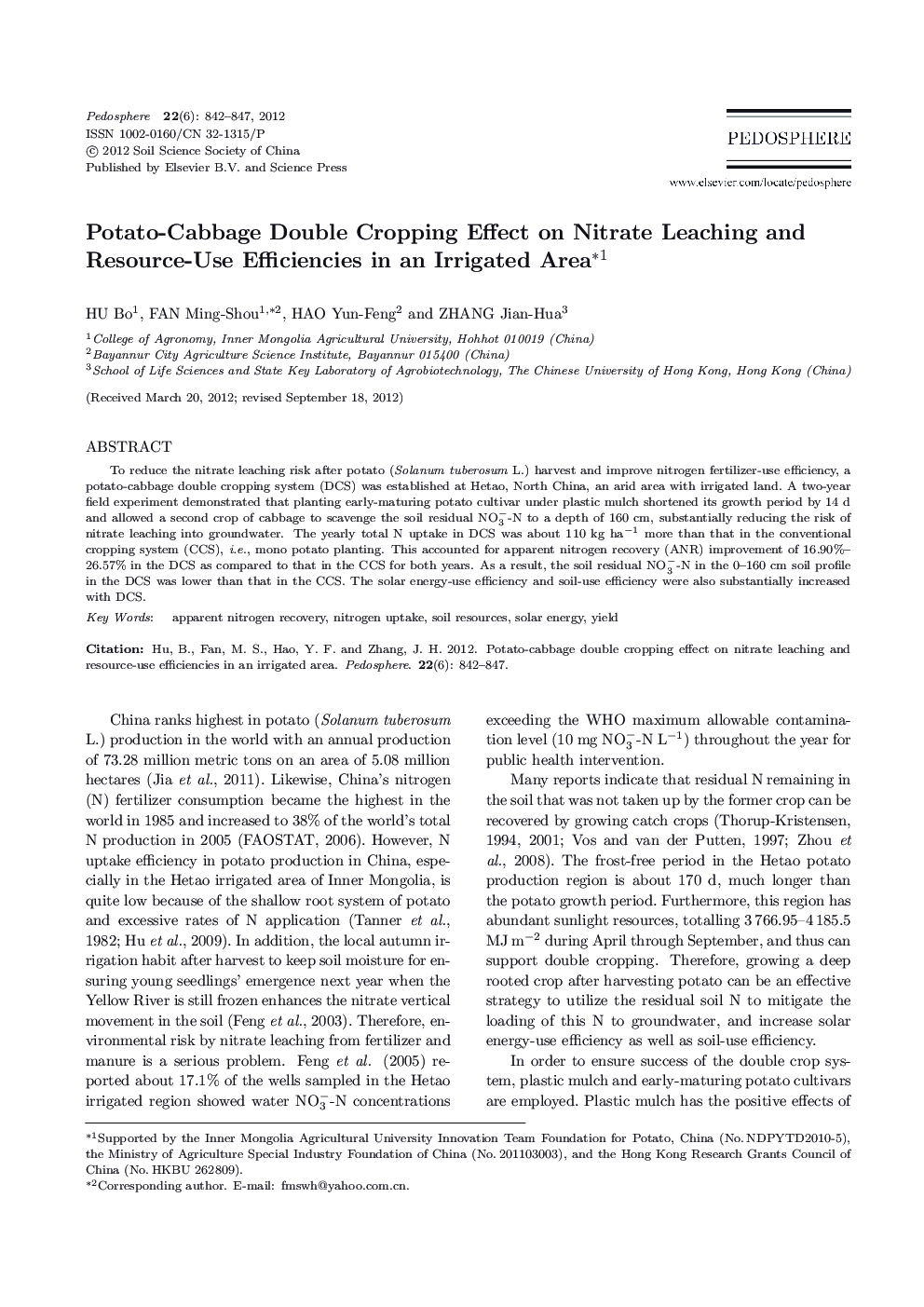| کد مقاله | کد نشریه | سال انتشار | مقاله انگلیسی | نسخه تمام متن |
|---|---|---|---|---|
| 4581566 | 1333707 | 2012 | 6 صفحه PDF | دانلود رایگان |

To reduce the nitrate leaching risk after potato (Solanum tuberosum L.) harvest and improve nitrogen fertilizer-use efficiency, a potato-cabbage double cropping system (DCS) was established at Hetao, North China, an arid area with irrigated land. A two-year field experiment demonstrated that planting early-maturing potato cultivar under plastic mulch shortened its growth period by 14 d and allowed a second crop of cabbage to scavenge the soil residual NO3−S-N to a depth of 160 cm, substantially reducing the risk of nitrate leaching into groundwater. The yearly total N uptake in DCS was about 110 kg ha−1 more than that in the conventional cropping system (CCS), i.e., mono potato planting. This accounted for apparent nitrogen recovery (ANR) improvement of 16.90%–26.57% in the DCS as compared to that in the CCS for both years. As a result, the soil residual NO3−-N in the 0–160 cm soil profile in the DCS was lower than that in the CCS. The solar energy-use efficiency and soil-use efficiency were also substantially increased with DCS.
Journal: Pedosphere - Volume 22, Issue 6, December 2012, Pages 842-847